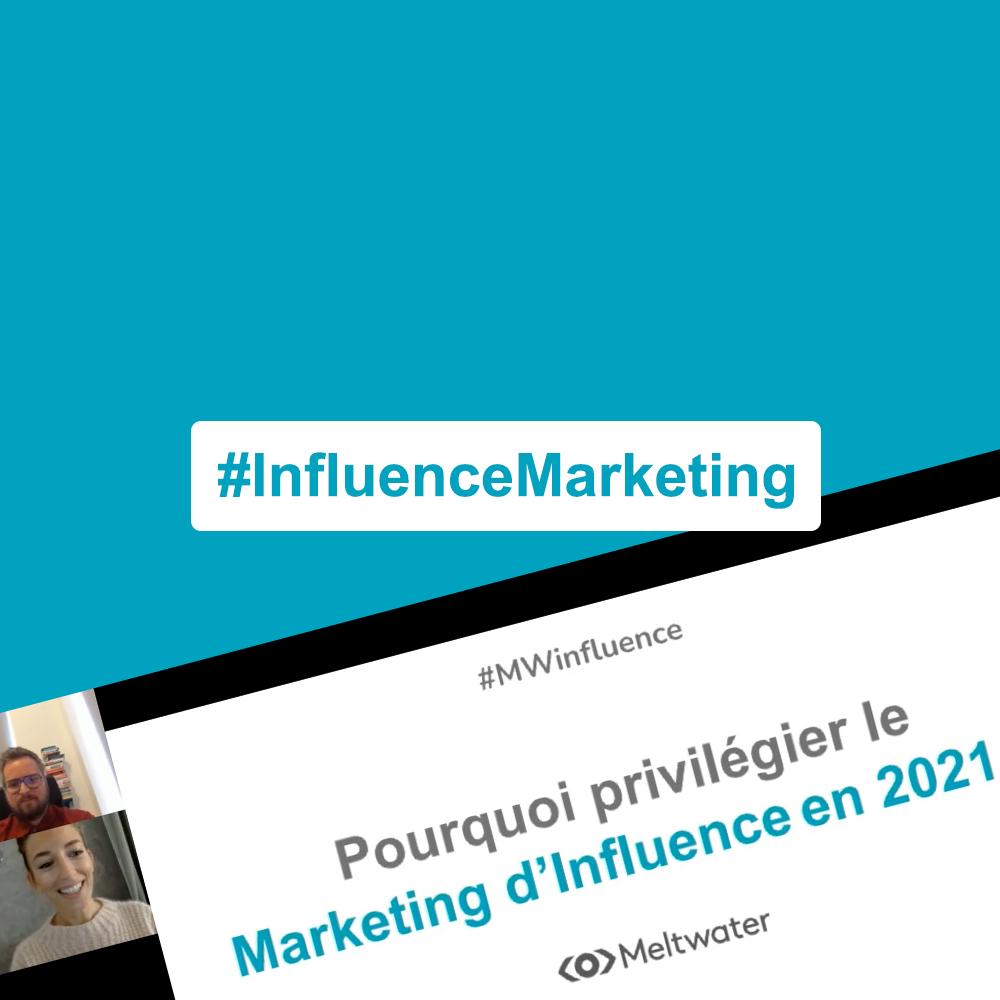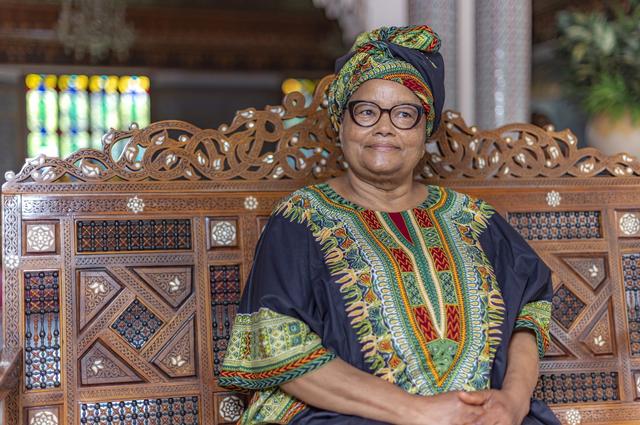Marketing influence in the face of the Performance Measurement challenge
To reassure advertisers as to the effectiveness of their devices, specialized agencies, social platforms and influencers must harmonize their performance indicators.
When the association which structures the advertising sector in France, IAB, decides to devote a task force to you, it is generally that you are starting to take up space ... Marketing influence is no exception.This industry, which represented $ 6.5 billion in world investments in 2019 (four times more than three years ago according to influencing Hub Marketing), is booming.A boom which is not always easy to take on the measure.This is the challenge of the newly created working group, which brings together agencies and specialized platforms: lead to "standardization of tools for measuring marketing influence."In other words, create standards common to all industry, as the big brother Display could have done a few years ago.
Not an easy task when we see how the platforms shelter the influence campaigns have their specificities.Example with a key video indicator, visibility.At Tiktok, we consider that a video is barely seen while at Facebook and YouTube, it must have reached a minimum viewing period which is not the same (respectively 3 and 30 seconds).Difficult, under these conditions, to compare the performance of each other.For some, like Twitch, it's even more complicated."How to put in perspective the 3,000 people that a stream gathered on Twitch with the million views made over time by a YouTube video?" Asks Marine Montironi, Head of Influence at We Are Social.The first number seems low compared to the second."It is however a great performance because we are on real time."
The agencies that influence each other can see it all the less clear as the solutions they use also seem decided to complicate their lives. "The two tools that we use in parallel, influence 4 You and Kolsquare, never put us up the same engagement rate for the same influencer," notes Marine Montironi. Even if they are close, it is necessarily disturbing. History to add a little complexity to all of this, brands must, in addition, deal with influencers who do not all have the same level of professionalization ... and obviously not the same criteria, when it comes to communicating to the brands of key indicators. "Some still assimilate their reach to the number of subscribers they have when we know today that a small percentage of this community really sees their posts, the fault of platform algorithms", illustrates the founder de Reech, Guillaume Doki-Thonon. And it is all the more difficult to find your way there that "access to the performance of most of them, who do not have a business account on Facebook and Instagram, is more than limited", in Believe the founder of Traackr, Pierre-Loïc Assayag.
On Instagram stories, an increasingly popular format, obtaining information sometimes is due to the obstacle course because no KPI is public. "We have to go through the influencer to access the most basic statistics", regrets Marine Montironi. Advertisers who make acquisition campaigns do not have this problem. They can be content to follow the conversions generated by the influencer thanks to an integrated tracking link. But the others, who use the format to make Awareness, generally have no other option than to ask influencers to send them screens of their stories. This allows them to access statistics such as the number of views but it is DIY. Marine Granger, Consultant Outreach and influence at Dentsu Aegis, remembers a vacuum dressing made a year ago on behalf of a client. His agency had to compile all the screenshots sent by the influencers who had participated in the event. "We had put it all in an Excel file from which we had extracted the most relevant data to establish the campaign assessment." A damn tedious Modus Operandi… and not even effective. "Even if 80% of the engagement generated by a post is made the first two or three days, we still deal with statistics that play in real time," recalls the founder of Kolsquare, Quentin Bordage. The screenshot for a day is no longer a faithful representation of the situation a week later. Admittedly, tools like Kolsquare or Traackr finally allow brands to aggregate all the engagement generated by a post or a story. But they are still a majority to do it all by hand. It must be said that these tools have a cost. Count 15 to 100,000 euros per year for a solution like Kolsquare which offers a whole battery of services related to campaign management.
The site is colossal, but the urgency is real. "The Marketing Influence market will not reach its full potential only to show its effectiveness to everyone," pleads Quentin Bordage. It is, as such, a population that it is crucial to convince: top management. Managers who are rarely familiar with the codes of the sector but need to see if the king is there. If only to make arbitrations which have become more and more numerous in this period of coronavirus. "More and more dashboards bring together Google Adwords, Display, Marketing influence and a king for each line," comments Quentin Bordage. Charge to specialists in marketing influence to do, in this context, proof of pedagogy. "To say that we touched x million people with a campaign is not concrete enough, estimates Mélissa Lévine, Social Media VP and influence within the Accor Hotels group. Explain that we have managed to generate a rate of 'Average engagement of X%, greater than the market average, it is already more so. "
Earned Media Value

The Influence Influence of the Accor group makes a parallel with the world of press relations from which it comes. "We were reduced to using somewhat old school indicators, such as advertising equivalence, to demonstrate to the Big Boss that the RP agency he paid was effective." The method has its limits - an advertising page obviously does not have the same impact as the article of a journalist who engages his credibility to speak of a product - but it has the merit of producing an understandable metric of all. This is the argument that prevails for the new fashionable indicator in the Marketing Influence sector, EMV, for Earned Media Value. The latter consists in taking into account all the interactions generated by the campaign (like, sharing, comments, etc.) and attributing them a financial value that varies according to the environments. The formula has the merit of weighting the various indicators of interactions, something that the engagement rate, which puts the likes on an equal footing where they come from the comments wherever they come , does not. "A like on a blog will have more value than on Instagram because we consider that it is more engaging. Same logic for sharing, which has more value than a like, because it extends the scope of the message", illustrates Guillaume Doki-Thonon.
In the end, the advertiser obtains an amount in euros which, as long as it is greater than the sums invested in the marketing influence system, allows him to be assured that he has for his money. "Business leaders look at the GRP in advertising, there is no reason for them to look at this Earned Media Value," said Quentin Bordage. On the other hand, they have to trust this indicator. "Not they think they have to do to yet another Bullshit Marketing," admits the founder of Kolsquare. Not obvious while this fairly recent indicator also suffers from the lack of harmonization in the calculation methods. "It is an indicator that each actor on the market seems to measure with their own formula," notes Pierre-Loïc Assayag. An opacity that is enough to generate distrust with some. "The brands that scream quite strong sometimes obtain solutions that they demean certain ratios when they seem high them," illustrates Pierre-Loïc Assayag. "It is very practical to justify the existence of a device but it has its limits", points to its marine side Granger. If his favorite tool, Kolsquare, systematically provides him with this indicator, he always calculates it in the same way, whatever the sector. "The problem is that a like in a lifestyle theme does not have the same value as a like in a subject so niche that the people who are interested are more rare," illustrates Marine Granger.
C'est là toute la limite de l'exercice. On ne peut pas mesurer l'engagement sans le mettre en perspective avec la valeur du contenu auquel il est associé, estime Guillaume Pommier, directeur délégué au développement de Social & Stories, l'agence sociale du groupe Figaro. "C'est quoi la valeur du like quand on fait un jeu concours ? Ou quand on poste une bonne blague qui n'a pas grand-chose à voir avec votre marque ?", interroge notre expert. Autant de questions que les outils spécialisés dans la mesure du taux d'engagement ne se posent pas. Peut-être parce que les réseaux sociaux sont loin d'offrir, à ce jour, une palette diversifiée de réactions aux posts ? Seul Youtube permet les pouces vers le bas. Facebook, qui l'a un temps envisagé, permet, lui, 7 types de réactions différentes alors qu'Instagram se contente du like… et c'est tout. "Le but ce n'est pas d'être vu mais de générer de l'intérêt", rappelle Guillaume Pommier. Mais mesurer la résonnance d'un message, ça a un coût. Surtout, ça implique de faire appel à l'humain, "pour trouver l'épicentre de ce message, voir comment il s'est diffusé et quelles réactions il a générées."
Interactions and interest
Guillaume Pommier gives the example of a campaign launched by a ready -to -wear brand, in partnership with a famous model."The brand's posts like those of the muse had generated a lot of likes and views. Quantitatively, it was a real success."By digging, the agency, however, updated a much more mixed assessment."The campaign had not made it possible to create a bridge between the brand's community and that of the model who absolutely did not exchange", regrets Guillaume Pommier.The two universes had remained siloted while the very essence of a marketing influence device is to allow a brand to get closer to a new community through a prescriber: the influencer.
"Based only on the number of interactions generated by a campaign is actually not enough for our customers," confirms Marine Granger. His agency uses a tool called Talkwalker, which allows him to listen to social networks and know, at time T, who talks about the customer, in what way, thanks to what influencer. An analysis of the feelings that the wealthiest can complement with post-test studies as often sees it in the classic media purchase. "We can set up barometers for monitoring the notoriety rate, preferably to the brand and Top of Mind, if the brand has the means," explains Raphaël Chatte, director of the Publicis Media innovation pole. When possible (some platforms like Facebook and Instagram do not allow it), this social intelligence work, coupled with data analysis, has a cost that advertisers are not always ready to put. "For many of them, the investment is not profitable so we do not measure and we are content with accessible KPI", regrets Raphaël Chatte. Mélissa Lévine is readily agreed. "I am not necessarily very fan of a somewhat simplistic indicator like EMV but if it allows you to secure a budget, I will play the game."
"The question that we will have to ask ourselves is how we want to position the influence. Is it a branding or king media?", Says Guillaume Doki-Thonon.No doubt a bit of both ... depending on the countryside.Hence the importance of finding KPIs that allow you to sweep the whole spectrum of the conversion tunnel, from Awareness to conversion (where a simple tracking link allows you to do the job)."It is essential to help all these brands that cannot get out of the experimentation stage, because they cannot measure the impact of their actions, to cross a course," abounds Pierre-Loïc Assayag.Quentin Bordage remains optimistic."It is five years ago, we were content with the number of followers, then we went to the engagement rate and today we realize that a like has the same value as a comment ... we advance slowly butSurely ", concludes this pioneer of marketing influence.
This article was also published in Adtech News, paper supplement from CB News magazine, dedicated to Adtech and Martech.In the October edition a file on the subject of the performance measurement in marketing influence, an interview with the owner of the digital of Mercedes Paris-Bordeaux, a tutorial on the tagging server-side, a focus on the start-UP Videorunrun, the programmatic barometer ...








